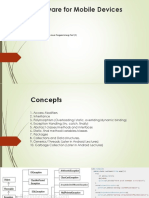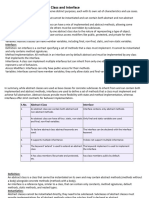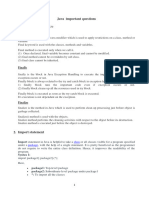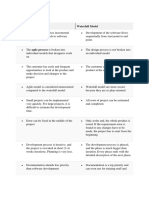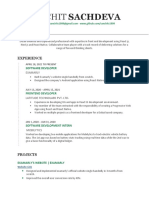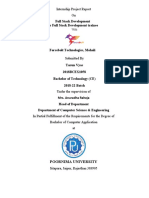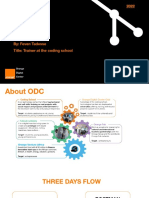Powered by AI
Bing
Certainly! Let’s delve into the concepts of final classes and abstract classes in Java:
1. Final Class:
A final class is declared using the final keyword.
Key characteristics:
Once a class is marked as final, it cannot be subclassed or inherited by any other class.
The main purpose of a final class is to prevent further extension or modification.
Final classes are often used for utility classes (where instantiation is not needed) or for security reasons.
Example of a final class:
final class MathUtils {
// Utility methods related to mathematical operations
// ...
}
Benefits of final classes:
Ensures that the class behavior remains consistent and unmodifiable.
Enhances performance by preventing method overrides.
2. Abstract Class:
An abstract class is declared using the abstract keyword.
Key characteristics:
An abstract class serves as a blueprint for other classes.
It cannot be instantiated directly (i.e., you cannot create objects of an abstract class).
Abstract classes can have both abstract methods (without implementation) and concrete methods (with
implementation).
Abstract classes are used to achieve abstraction and provide a common interface for subclasses.
Example of an abstract class:
abstract class Shape {
int color; // Data member
abstract void draw(); // Abstract method (no implementation)
void setColor(int c) {
color = c;
}
// Concrete method with implementation
void displayColor() {
System.out.println("Color: " + color);
}
}
Benefits of abstract classes:
Encapsulate common behavior and properties.
Define a contract for subclasses.
Promote code reusability and maintainability.
3. Comparison:
Abstract Class:
Uses the abstract keyword.
Helps achieve abstraction.
Can have both abstract and concrete methods.
Requires child classes to provide implementations for abstract methods.
Final Class:
Uses the final keyword.
Restricts other classes from inheriting its properties and methods.
Cannot have abstract methods or final methods.
Cannot be subclassed.
In summary:
Abstract classes provide a way to define common behavior and enforce method contracts.
Final classes prevent further extension and modification, ensuring stability and security.







